Foreign weapons and equipment in the Georgian army
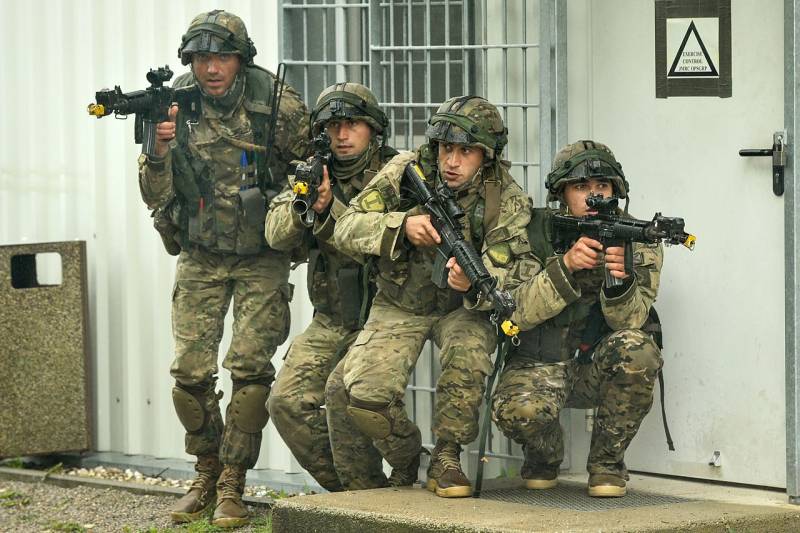
Georgian fighters with American rifles
Georgia has been planning to join NATO for a long time and is taking the necessary measures for this. One of the main tasks in this direction is the transfer of the armed forces to NATO standards and their corresponding re-equipment. To date, technology and weapon foreign-style weapons received a significant order in the army, but the process of a complete transition to them is still far from being completed and is facing noticeable problems.
Legacy and novelties
As a result of the collapse of the USSR, independent Georgia received not the most numerous, but sufficient and well-equipped armed forces. They were built and armed exclusively to Soviet standards, and for a long time this was considered acceptable.
Since the mid-nineties, Georgia has been participating in various NATO cooperation programs, and after the 2003 coup, the new authorities headed towards joining the Alliance. In this regard, new programs and joint projects aimed at solving various problems have been launched. In particular, it was planned to rebuild and re-equip the Georgian army according to NATO standards.
In the early years, such re-equipment was carried out at the expense of foreign aid and the purchase of imported samples. The United States and other countries provided weapons and equipment of various types, mostly not new. To the best of its ability, Georgia tried to build up its own military industry and produce some products, incl. according to new standards.

Sniper with foreign weapons
The military adventure of President M. Saakashvili in 2008 seriously hit the Georgian army. Nevertheless, on its own and with foreign assistance, Tbilisi continued to reform and re-equip the army. Processes of this kind are still going on and are far from being completed.
Now the Georgian army is armed with Soviet-style weapons and equipment, made in the past both directly in the USSR and in the countries of the Department of Internal Affairs. It is noteworthy that it is on such products that some key areas actually hold. Keeping the old Soviet legacy, the Georgian army receives newer foreign products. As a result, in a number of areas there is a serious disunification with all the attendant problems.
Infantry weapons
The lack of uniformity is clearly manifested in the field of small arms. So, only in the recent past, the American M4 rifle in a number of modifications became the main weapon of the infantry. Previously, this place was occupied by AKM and AK-74 assault rifles of Soviet and foreign production. In addition, the Soviet PM or APS pistols have already been abandoned, instead of which 5-7 types of foreign weapons have been adopted.
The main machine gun is still the PK(M), although it is already being replaced by foreign M240s. Earlier, the old RPK-74 was almost completely replaced with imported Negev and M249 machine guns. Deliveries of large-caliber M2HB machine guns are also carried out. In the field of sniper weapons, the rejection of SVD in favor of American, Finnish, etc. continues. systems.
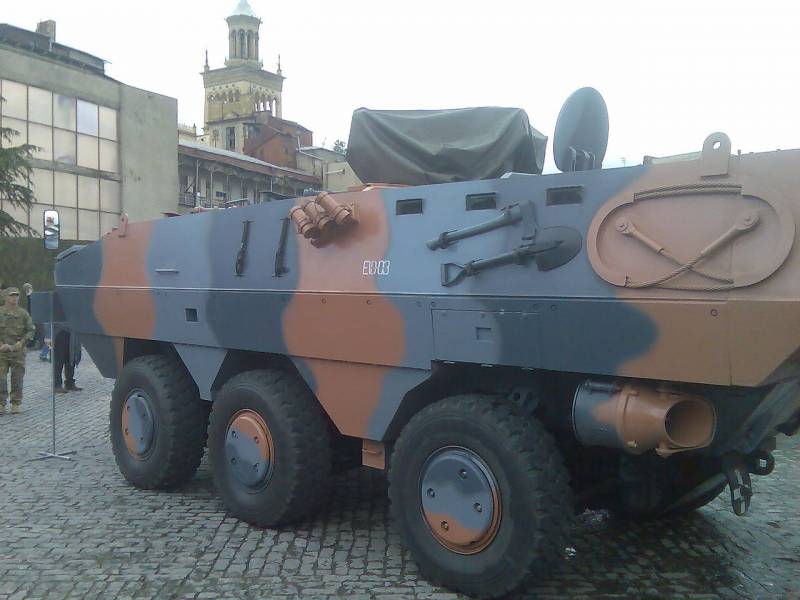
Turkish-made Ejder armored personnel carrier
As far as possible, foreign hand grenades and anti-personnel mines of various types are introduced. Not so long ago, a contract appeared for the supply of American FGM-148 anti-tank systems, which will have to press the Soviet-made complexes. However, a complete replacement is still far away.
Land vehicles
According to known data, Georgia has approx. 120-125 tanks T-55 and T-72 of various modifications. Infantry transport is represented by BMP-1, BMP-2, BTR-70, BTR-80 and MT-LB vehicles. In the recent past, this technique was modernized with the participation of foreign states. At the same time, the replacement of old Soviet tanks or infantry fighting vehicles with foreign equipment at this stage is not possible. In the field of armored personnel carriers, the situation is slightly better - they bought approx. 90 Turkish-built Ejders.
In the last 10-15 years, increased attention has been paid to the direction of armored vehicles. So, several hundred HMMWV vehicles were received from the USA, in a protected and simple design. Turkish Cobra armored vehicles and American Cougar and MaxxPro were also purchased or supplied as part of the assistance. In addition to imported samples, Georgia independently produces armored cars of the Didgori series, made on foreign units.
Self-propelled and towed artillery is still built on samples from the USSR / ATS, but there are exceptions. Thus, RM-70 MLRS upgraded to modern standards were received from the Czech Republic, and LAR-160 systems were purchased from Israel. Israel-made K6 portable mortar was adopted.

Turkish Cobra armored cars
With all this, a serious re-equipment of the car park has been carried out. Due to the lack of own production, only foreign equipment of various classes was purchased or accepted as assistance. The supply includes various European and American trucks, etc.
Air Force and Air Defense
As part of aviation brigade of the armed forces has several dozen aircraft and helicopters exclusively from the USSR or the ATS. Due to limited opportunities, Georgia was forced to abandon the purchase of new equipment. The only exception was 12 used Bell 205 helicopters from the US. At the same time, attempts were repeatedly made to modernize existing equipment with the support of foreign partners.
Since the middle of the XNUMXs, the Georgian army has been building and developing unmanned aircraft from scratch, and it immediately met foreign standards. Ready-made imported UAVs of various types, mostly Israeli, were purchased. Over time, we managed to organize the assembly of some simple samples at our own enterprises. At the same time, UAV projects are still missing.
In air defense, you still have to rely on old Soviet systems, but there are also new products. So, mobile radar stations of the Ground Master series were purchased from France. Since the end of the XNUMXs, Israeli SPYDER air defense systems have been in service.
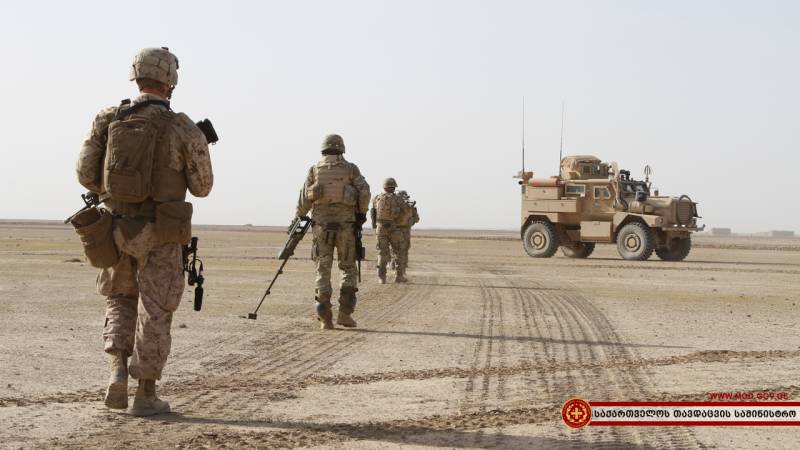
Georgian soldiers and armored car MaxxPro
Georgia received and mastered MANPADS of various types. The most massive steel FIM-92 from the United States and allies. Grom products were supplied from Poland. A few years ago, a contract appeared for the French Mistral MANPADS in the self-propelled version of ATLAS. All these samples are operated together with the old "Arrows" and "Needles" of Soviet production.
Coast guard
The Coast Guard is not formally part of the armed forces and is an independent structure. However, it faces the same problems and challenges. BOHR has a number of old Soviet-built boats, and the renovation is carried out only at the expense of foreign supplies.
Patrol boats of various types were ordered and received from the United States, Turkey and Greece. Some of them were built specifically for Georgia, while others were transferred from stock. For example, the United States allocated two obsolete Island-type boats and a pair of Point project boards.
Obvious difficulties
The process of transferring the Georgian armed forces to NATO standards and the corresponding rearmament has been going on for almost two decades. During this time, certain results have been obtained, but the process is still ongoing, and it will take a long time to complete it. At the same time, it is still impossible to accurately predict the date of the complete abandonment of the old Soviet weapons.
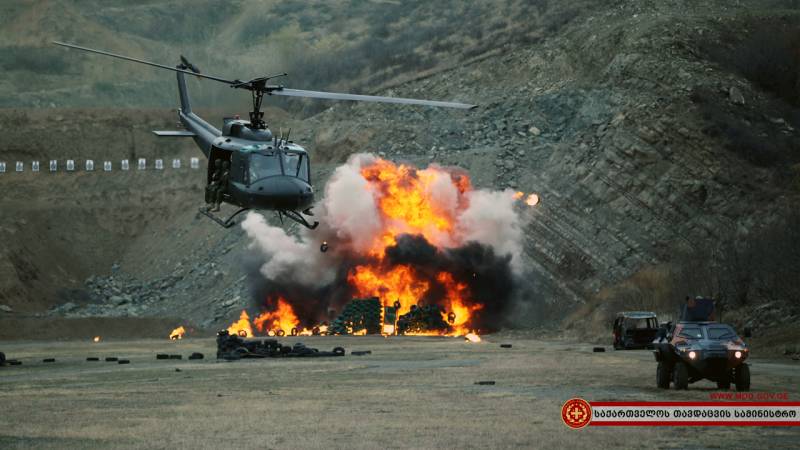
Foreign helicopter Bell 205 and imported armored car
Georgia has very modest resources and capabilities, which seriously limit the possibility of rearmament. Tbilisi can count on the help of foreign partners, but it also has its limits. All this leads to unpleasant consequences.
First of all, the transition to a new material part is seriously slowing down. So, to date, in no direction or sector has it been possible to carry out a complete rearmament. Despite a sufficient amount of foreign weapons or equipment, there is still a lot of old equipment that no longer meets current requirements and plans.
At the same time, the replacement of equipment and weapons of some classes is currently virtually excluded. In particular, Georgia still does not have a single modern tank, infantry fighting vehicle, cannon artillery system or NATO-style aircraft. When they will appear - and whether they will appear at all - is unknown.
Insufficient rates of rearmament lead to the gradual disunification of parks and arsenals. As a result, the army simultaneously needs ammunition, spare parts, etc. different types and standards, which seriously complicates logistics and leads to unnecessary spending.
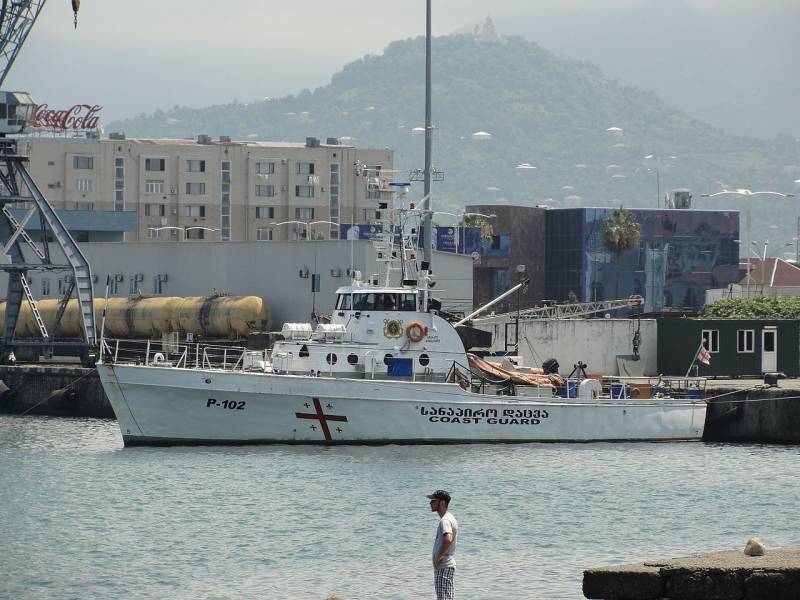
One of the Point class boats
Against the background of such failures, an unmanned "air fleet" that fully complies with foreign standards looks advantageous. However, progress in this direction is due not to the measures taken, but to the low base effect. The UAV fleet was built from scratch and was immediately equipped with new foreign-made equipment.
Clear perspectives
The future of the armed forces of Georgia in terms of updating weapons and equipment is generally predictable. The current processes of re-equipment and re-equipment will continue, but their pace will remain at the current level or increase slightly. Georgia has no opportunities for their sharp acceleration. In turn, foreign partners who can help in this matter are busy supporting another state.
Thus, over the next years, up to the medium or long term, the Georgian army will simultaneously have both Soviet and NATO-style systems in service. A complete transition to the latter cannot be ruled out, but this will require an indefinite time and special efforts.
According to known data, the total number of armed forces of Georgia now does not exceed 20 thousand people. The military budget for the current year is less than $300 million. As observed events show, such spending is sufficient to maintain the existing armed forces, but too small for their full-fledged modernization in a reasonable time. Whether it will be possible to change this situation and solve the tasks set, time will tell.
Information